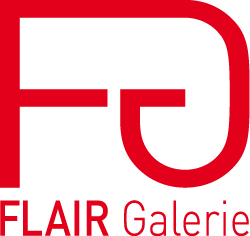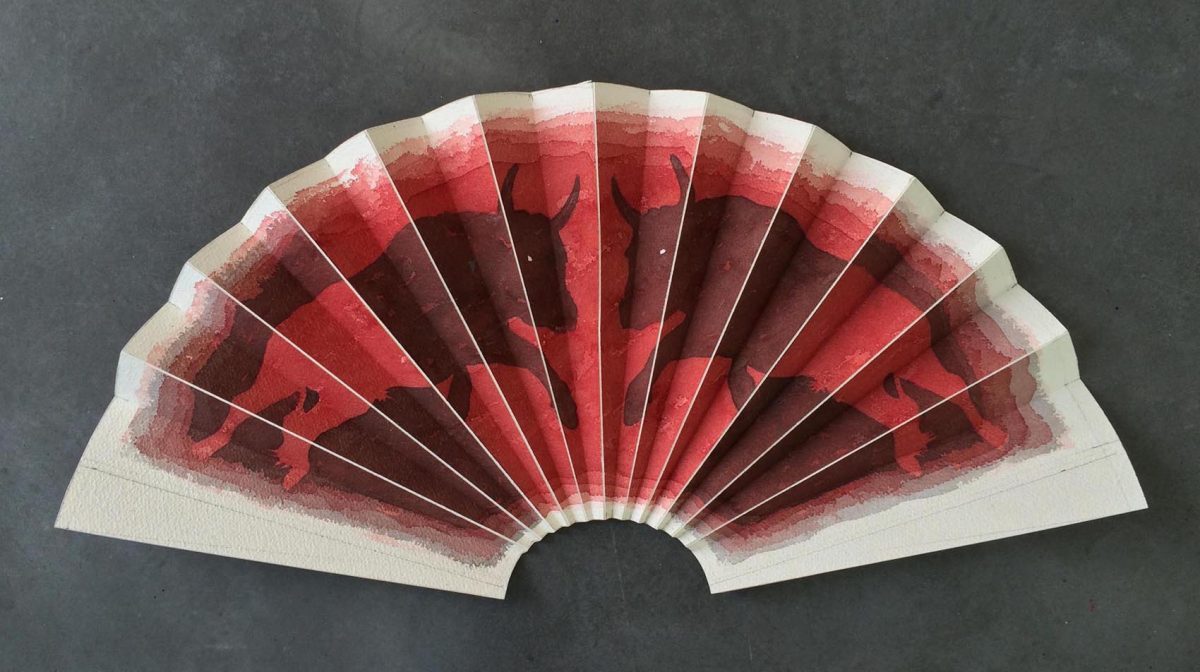Jeux
Inks and watercolors by Lucio Fanti
From September 3rd to November 26th, 2016, FLAIR Galerie presents “Games”, watercolors and colored inks by painter and set designer Lucio Fanti. A leaping bull, dreaming dog, jagged-edged black horse, half-rooster and half-donkey chimera, the odd fly or bee as an incongruous presence here or there … this unique bestiary examines, surprises, amuses. Romanticism, poetry, history and drolleries are mingled, always with a proper dose of irony, a characteristic of Lucio Fanti’s work. These variations on a theme are indeed diverting and quite casually reveal many secrets about their maker. Come play.
Lucio Fanti has painted nature, unsettling seas and skies, trees and pylons, some “urban water lilies”, vines and gigantic bunches of grapes. He has also hijacked soviet imagery, built houses of cards and labyrinths. Scores of works that have earned for this Italian, who arrived in France in 1965, the praises of Régis Debray, Jorge Semprun, Louis Althusser, and Italo Calvino, among others. In his world, man barely makes an appearance: a bust, a statue, a ghost, a puppet.
And animals? They are not more palpably depicted : barely a bull in a blur, the shadows of two dogs before a bunch of grapes, or dogs seen from behind, absorbed in the contemplation of a sunset or starry night. Overwhelmingly they recall Caspar David Friedrich’s Evening Landscape with Two Men, a famous painting by the master of German romanticism so admired by Lucio Fanti. However, he does not dwell on it. Is Lucio Fanti a romantic ? Certainly, but one filled with irony. Touched by the enigma of a landscape or the silence of infinite space? With a few animals cleverly posited in the scene, he dubs his watercolors, Sense of Nature or Dog Contemplating Canis Major. A frequent defense of the serious artist who takes almost nothing seriously, especially what he calls “artistry”. He is a painter looking for the flipside of everything he sees, even words. By choice, he has always remained an outsider. Lucio Fanti and the art of outfoxing.
But let’s get back to tracking animals. Absent in his paintings, they were nevertheless important to their author who confessed to having a “misanthropic side” and “a great tenderness for anything not human”. So much so that, years ago, he imagined and legally registered the name of a newspaper to be called “Le Chien Diplomatique”, exclusively dedicated to news concerning the animal world. In an idiosyncratic way, without hammering or being a ham, he dealt with the question of our rapport with animals. He acknowledged them.
Today, Lucio Fanti plays with animals and, thanks to them, we pick up the puzzle pieces of a self-portrait, a notebook. Bulls call to mind the Camargue, where he owned a mazet (a small Provençal cottage), and the bullfighting that fascinated him. Why not paint them on a folding fan, a geometric form he studied relentlessly ? Yes, why not ? Italy also features in a dark horseman, reminiscent of Chirico, next to which Lucio Fanti sets the famous six-legged dog, logo of an Italian oil company, ENI. Ancient Rome is at the center of an ink drawing, where we vaguely decipher the letters of the renowned “Cave Canem” from Pompei, an intriguing warning since “beware” also means “take care” of the dog. Needless to say, the painted letter is a theme as dear to the heart of our author, as is the play of light and shadow. Russia is represented in a portrait resembling Pavlov. But the scientist, who used dogs to study conditioning, is now a dog too. A wink from Fanti to Charles Le Brun or the rock band, Pavlov’s Dog. Go figure …
Out of this ubiquitous wit, it would be wrong to label Lucio Fanti flippant particularly in terms of technique. He remains outside of the mainstream, crafting his work in a classic, even academic, style. The ultimate allusion here is The Young Hare by Dürer. Always important for Fanti is not the interpretation of a subject but its representation. By painting an iris, he seeks not his own painting but the flower, “a wonder of nature in itself”. He crowns the iris with a bee, a highly symbolic insect not noticed straightaway. This detail is the secret subject of the image nevertheless, which becomes primordial by lending the image its title: The Bee.
One is reminded of those painters in the 15th and 16th century, who put a minuscule fly in their paintings. A token of their virtuosity, the musca depicta (the painted fly) also stood for the ephemeral and made the painting much more a vanitas. Lucio Fanti may have had that in mind. Unless all this is mere surmise, a delusional interpretation. Just another game this exhibition invites you to play.
Marie-Françoise Leclère, 2016
Translated by Ilsa Carter and Pierre Guglielmina
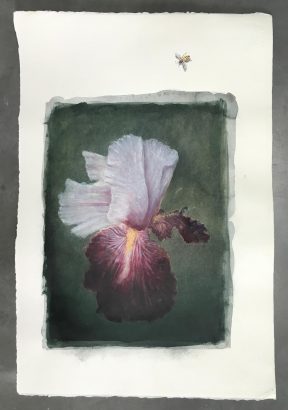
Watercolor and oil on Arches paper, 57 x 38 cm © Lucio Fanti
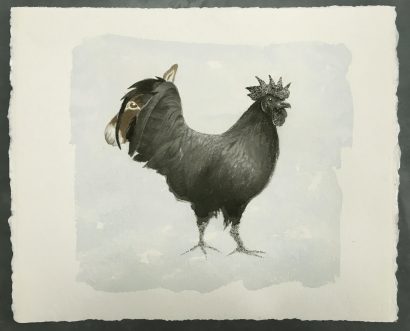
Watercolor on Arches paper, 48 x 58 cm © Lucio Fanti
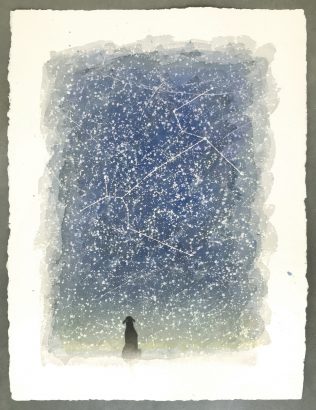
Ink and watercolor on Arches paper, 77 x 58 cm © Lucio Fanti
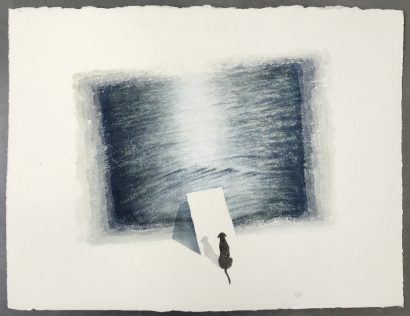
Watercolor on Arches paper, 77 x 58 cm © Lucio Fanti
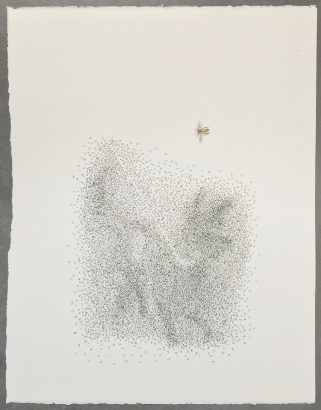
Ink on Arches paper, 66 x 51 cm © Lucio Fanti
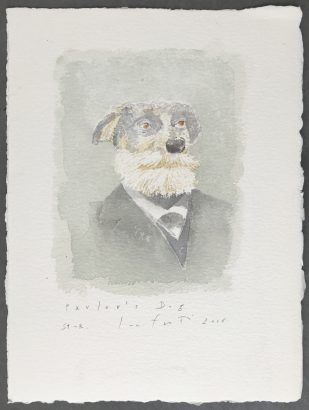
Watercolor on Arches paper, 39 x 29 cm © Lucio Fanti
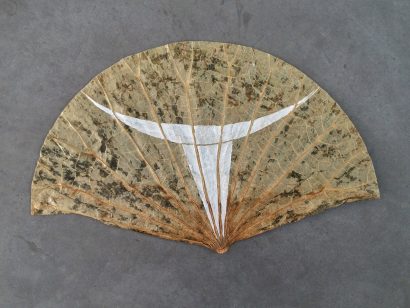
Acrylic paint on lotus leaf, 21 x 34 cm © Lucio Fanti
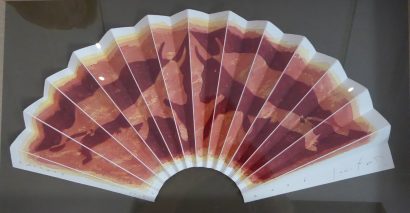
Watercolor on Arches paper, 33 x 63 cm © Lucio Fanti
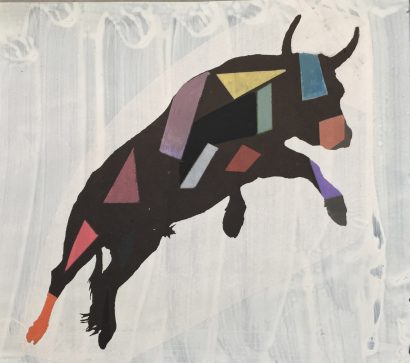
Photo, aluminium and acrylic paint on silk paper, 19 x 23 cm © Lucio Fanti
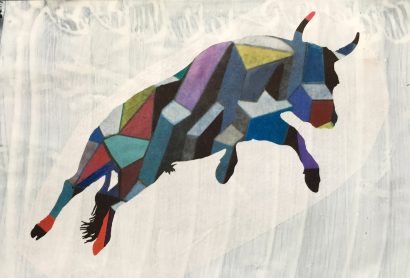
Photo, aluminium and acrylic paint on silk paper, 15,5 x 25,5 cm © Lucio Fanti
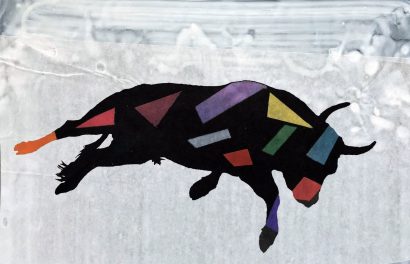
Photo, acrylic paint and aluminium on silk paper, 17 x 12 cm © Lucio Fanti
